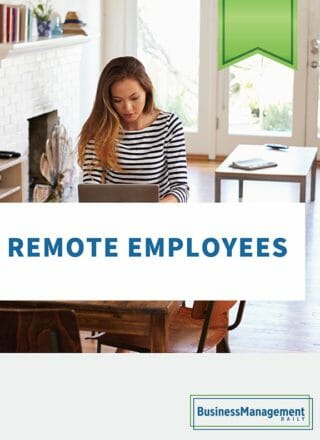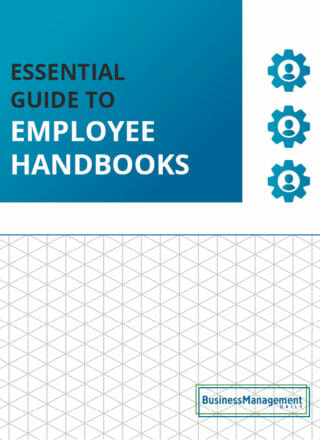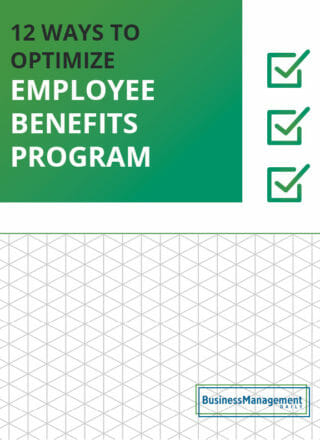9 ways to make virtual new employee orientation a success
According to a recent study by Owl Labs, 16% of companies are now fully remote and don’t even feature a physical office location. Beyond that, 62% of workers aged 22 to 65 work remotely at least occasionally. The study also found that 4.7 million employees in the United States put in at least half of their working hours outside the office.
These statistics reflect the sharp uptake in remote work post-pandemic, which has forced human resources departments to get creative with employee management. In particular, more and more companies are moving toward virtual new employee orientation. That means tackling crucial onboarding tasks like team introductions and submitting employee paperwork entirely online — typically with the help of some savvy HR software.
Yet, that’s not to say that remote onboarding doesn’t have its fair share of challenges.
After all, just because your onboarding experience will largely take place over apps like Zoom doesn’t let you off the hook. You still have to make sure that your remote employees are engaged, understand your company culture, feel like part of the team, and receive proper training for their roles. That’s easier said than done if you don’t have a rock-solid virtual onboarding process in place.
To make virtual orientation more manageable for you, I’ve prepared the most effective ways to onboard new hires remotely, so stick around to learn more.
How is virtual onboarding different from in-person onboarding?
While virtual new employee orientation has the same end goals as in-person onboarding (i.e., completing new hire paperwork, acquiring necessary equipment, introducing new hires to your team, etc.), the approach is completely different.
For one, keeping your virtual employees engaged during orientation is a significant challenge. You won’t have the luxury of face-to-face interactions (and the increased engagement that comes with it), so you’ll have to think outside the box.
A mistake early adopters of virtual onboarding made was to try to mimic their on-site experiment down to the T. This didn’t work out for one very simple reason.
A digital environment is drastically different from a physical office.
For example, the day one in-person onboarding process for new hires tends to look something like this:
-
A detailed welcome presentation
-
A sit-down with HR where you present the employee handbook
-
A Q&A session with executives
-
Team introductions
-
Lunch with other team members
Granted, this process is a fantastic way to make any new hire feel valued, engaged, and included on their first day. The problem is that this process doesn’t translate well to a digital work environment.
Trying to screenshare an hour-long welcome presentation won’t have the same impact as it does in person, which is why you need to alter your approach. Instead of trying to copy and paste your in-person onboarding experience, you should focus on creating a unique virtual experience that aligns with your company’s mission and culture.
Why virtual new employee orientation needs to be impactful
A successful onboarding process is all about the impact it has on new team members, regardless of whether it’s conducted virtually or in person.
An employee’s first week is always stressful, as they’re bombarded with paperwork, training, and introductions to new teammates. That’s not to mention that they’re still getting used to the responsibilities involved with their new role, which brings additional pressure.
Considering this, it’s not hard to see why, on average, one in six new hires is lost within the first six months of starting their positions.
The solution?
 A robust onboarding program that’s consistent, unrushed, and coordinated is the #1 way to improve new hire retention rates. According to a study by BambooHR, employees who have a positive onboarding experience become 18x more committed to their employer. Statistics compiled by Click Boarding also found that great onboarding programs convince 69% of employees to stay a minimum of three years in their new roles.
A robust onboarding program that’s consistent, unrushed, and coordinated is the #1 way to improve new hire retention rates. According to a study by BambooHR, employees who have a positive onboarding experience become 18x more committed to their employer. Statistics compiled by Click Boarding also found that great onboarding programs convince 69% of employees to stay a minimum of three years in their new roles.
If you want to improve new hire retention rates at your organization, then you need to place a lot of emphasis on your employee onboarding process — whether it takes place in a virtual environment or not. The difficulty lies in retaining the impact that in-person onboarding techniques have, such as one-on-one meet and greets with teammates and executives.
Video calls are less engaging than face-to-face interactions, so you need to think outside the box if you want to keep the energy alive. That’s why companies adopt fun ideas like virtual coffee time, happy hour, and show-and-tell as fun ways to break the ice and engage employees.
After all, team-building is a huge aspect of onboarding that often gets overlooked. The more you can form a connection between your new hires and existing employees, the more likely they’ll be to stick with their new jobs.
9 fun and effective ways to virtually onboard new remote employees
The good news is there are plenty of ways you can spice up virtual new employee orientation to make it just as impactful (if not more) as in-person onboarding. If you haven’t already, using an HR software system like an HCM or ATS (applicant tracking system) will make your life a lot easier when onboarding employees.
That’s because they organize all your onboarding tasks into one virtual workspace, which makes it effortless to keep track of where each employee is in the onboarding process. This will ensure you stay consistent and coordinated, which are two huge components of successful onboarding.
The great thing about these types of systems is that they can do more than help with recruiting and onboarding.
Most HCMs will also contain features for storing all necessary employee documents in one convenient location. Employee profiles should include:
-
Contact information (name, address, phone number, emergency contact, etc.)
-
A signed copy of the employee handbook
-
Their resume and job application
-
A signed copy of their job offer
Kept privately, you should also retain employee payment information (routing and deposit numbers, direct deposits, etc.), tax records, and medical records.
Also, don’t forget that your remote workers will likely need some assistance setting up their home office. At the bare minimum, they’ll need a desktop PC or laptop, a high-speed internet connection, and a headset to start completing tasks and communicate with you. Including some cool company swag, such as a branded coffee mug or shirt, can help sweeten the pot.
Beyond that, you need to know some fun ways to engage your new employees so that they truly start to feel like a part of your team. Here’s a look at some exciting virtual onboarding techniques that you can start using today.
#1: Virtual scavenger hunts for new employees
While the thought of a scavenger hunt may conjure images of children searching for Easter Eggs, virtual scavenger hunts are a tad different. Platforms like Scavify offer virtual scavenger hunt apps that you can use to guide new employees through their first 90 days of employment.
They’re completely customizable, and you’re able to use QR codes, pictures, videos, surveys, quizzes, and trivia questions to piece together challenges for your scavenger hunt. These will center around your company culture, mission statement, and training modules.
An added bonus is these scavenger hunts are a great way to keep your new employees on track with their onboarding, as they simply have to follow their list of challenges. Once the scavenger hunt is complete, you’ll have a fully onboarded remote team member who’s ready to rock.
#2: Zoom coffee check-ins
Conducting regular check-ins with new employees is crucial, and virtual coffee breaks are fun and effective ways to knock them out. They’re also extremely easy to set up, as you only need to ask when your remote employees are free for a quick chat and a hot beverage.
While it can be tempting to rule out the ‘coffee’ part of the virtual check-in, your calls will be far less engaging as a result. Instead, lean in the other direction and heavily emphasize enjoying a hot beverage during these brief check-ins. If your new hires aren’t coffee drinkers, they can enjoy a cup of tea, an energy drink, or a glass of water.
Sharing beverages is a great icebreaker, and talking about coffee or tea can help employees open up about how their first week of work is going.
#3: Provide perks for completing virtual onboarding
If you want your efforts to stay consistent, then you need ways to incentivize your new hires to complete their onboarding tasks. Without a reason to care, some new hires may neglect things like signing their employee handbook, filling out necessary paperwork, and completing training modules.
Instead, they’ll likely get swept up with the responsibilities involved with their new role, leaving your onboarding to-do list perpetually unfinished.
Savvy HR professionals have found ways to remedy this issue by providing digital perks for employees who complete their to-do lists (especially if they get everything done early). Something as simple as offering a $25 gift card to a popular restaurant or retail store can motivate your new hires to take their onboarding seriously. Besides gift cards, you can offer company swag, balloons, sweets, and other little prizes for knocking out onboarding tasks early.
#4: Give new hires a grand entrance
One of the most important things to do when onboarding a new remote employee is to send out a welcome announcement to your entire organization.
This serves two purposes.
First, it serves as a way to make your new team member feel welcomed as a valued part of your team.
Secondly, it lets all your other employees know that the position is no longer open and that they have a new team member arriving.
Without sending an announcement message, the rest of your team will have no way of knowing that someone new is about to join. They may even think the position is still open and might actively recommend people for the role.
That’s why it’s so vital to send the new hire announcement out as soon as the new employee starts their first day. Slack is a great app for this, as you can use a team announcement channel to inform everyone about new employees. If you don’t use a messaging system, then a company-wide email will suffice (as does a company-wide video conferencing call).
Whenever you make the announcement, include the new hire’s name, photo, and a short bio. That way, everyone will know who they’re about to start working with, which can help break the ice.
#5: Create a digital library for new employees
Providing your new hires with helpful resources is always a good idea, and a fun way to go about it is to create a ‘digital library’ of sorts. This space can double as a virtual hangout for your new remote employees.
It could be a virtual chat room, a social media group, or a video channel where your new staff can get away from the pressures of onboarding and relax for a bit. To populate your digital library, compile all your resources like employee guides, handbooks, blog posts, and a company glossary.
This will provide a relaxing and helpful atmosphere for your new team members that they can visit during their lunch break or when things get too stressful.
#6: A welcome lunch with remote team members
Sitting down to a friendly lunch with executives and employees is an in-person onboarding tradition. Luckily, this trend does not have to disappear during virtual new employee orientation.
All you have to do is sit down and enjoy lunch with your new hires via a Zoom or Skype call. Give your team a $20 stipend to spend on their favorite lunch, whether that’s a pizza, some barbecue, or a deluxe deli sandwich.
However, what you’re munching on isn’t as important as the discussion/team-building exercises that take place during your time together. While you’re eating, you can play fun team-building games like Jeopardy, Scattegories, and Two Truths, One Lie.
#7: Use a buddy system
As stated before, the onboarding process is inevitably stressful for new hires. There’s a lot going on, and they’re still getting into the groove of their new role and responsibilities. To ensure they don’t get overwhelmed, assign them an onboarding buddy.
What’s that?
An onboarding buddy is a designated employee who will assist the new hire through onboarding. That means they’ll do things like checking in with the new hire, helping them complete essential tasks, and introducing them to other team members.
Most importantly, an onboarding buddy is someone who can answer a new employee’s questions. This is huge because new employees tend to have tons of questions, and they’re not always sure who they need to ask. They may feel intimidated asking questions to their direct manager or an executive for fear of seeming uninformed.
With an onboarding buddy, they’ll know exactly who they can come to with their questions, no matter how trivial.
#8: Engage in regular meditation sessions
For employees to function at peak levels of productivity and engagement, they need to be relaxed and stress-free. An excellent way to achieve this is to have regular virtual meditation/mindfulness sessions with your employees (not just new hires).
As a bonus, your new employees will get a chance to disconnect from the onboarding process during these sessions, which will help them destress. This also shows that you care about the mental health of your team members, which is incredibly important in today’s age.
#9: Have a photo-sharing event
When working at an office, new employees can peek their heads in coworker’s cubicles and offices to check in and shoot the breeze. Most staff will have pictures of their pets, family members, and hobbies adorning their offices, which make great topics for small talk.
You won’t have that same luxury in a virtual environment, but you can replicate it through photo-sharing events.
This is where team members share photos of their favorite places, spouses, children, and pets over a video call. Photo-sharing events are excellent ways for new hires to get to know their team members on a more personal level.
Wrapping up: Virtual new employee orientation
Virtual onboarding is a separate art from in-person onboarding, and it can be just as rewarding when done right. Instead of trying to directly replicate your in-person onboarding experience, use this guide to craft a uniquely tailored virtual experience for your new hires. By thinking outside the box and getting creative, you’ll develop an engaging onboarding experience that makes your new team members feel welcome, engaged, and excited about their roles.







